Vietnam’s northernmost province offers travelers a rare glimpse into untouched landscapes and authentic highland culture. To fully appreciate Ha Giang’s dramatic karst plateaus, emerald valleys, and vibrant ethnic villages, timing your visit is crucial. The region’s weather patterns dramatically shape the travel experience, transforming misty mountain passes into golden rice terraces and blooming buckwheat fields throughout the year. This comprehensive Ha Giang weather by month guide from Phieu Travel will help you plan the perfect journey through Vietnam’s final frontier, ensuring you arrive prepared for whatever Mother Nature has in store.
1. Overview: Ha Giang’s climate explained
Ha Giang’s climate presents a fascinating study in highland weather patterns, offering four distinct seasons despite being located in tropical Southeast Asia. The province’s mountainous terrain, with elevations ranging from 800 to over 1,600 meters above sea level, creates microclimates that can surprise even seasoned travelers. This altitude difference explains why Ha Giang feels worlds apart from the humid lowlands of Vietnam, delivering crisp mountain air and temperature variations that mark the passing seasons with remarkable clarity.
The province experiences a subtropical highland climate influenced by monsoon patterns. Winters bring cool, dry air masses from mainland China, while summers usher in warm, moisture-laden winds from the South China Sea. These weather systems interact with Ha Giang’s dramatic topography to create unique conditions throughout the year. Temperature fluctuations between day and night can be significant, especially during winter months when thermal amplitude often exceeds 10°C.
Local ethnic communities have adapted their agricultural practices and cultural celebrations to this distinctive climate cycle. The H’mong, Dao, Tay, and other groups have developed intricate knowledge of seasonal transitions, planting different crops at precise times and scheduling festivals to coincide with favorable weather windows. This traditional wisdom has shaped both the landscape and cultural calendar, giving visitors multiple opportunities to experience Ha Giang’s changing character throughout the year.
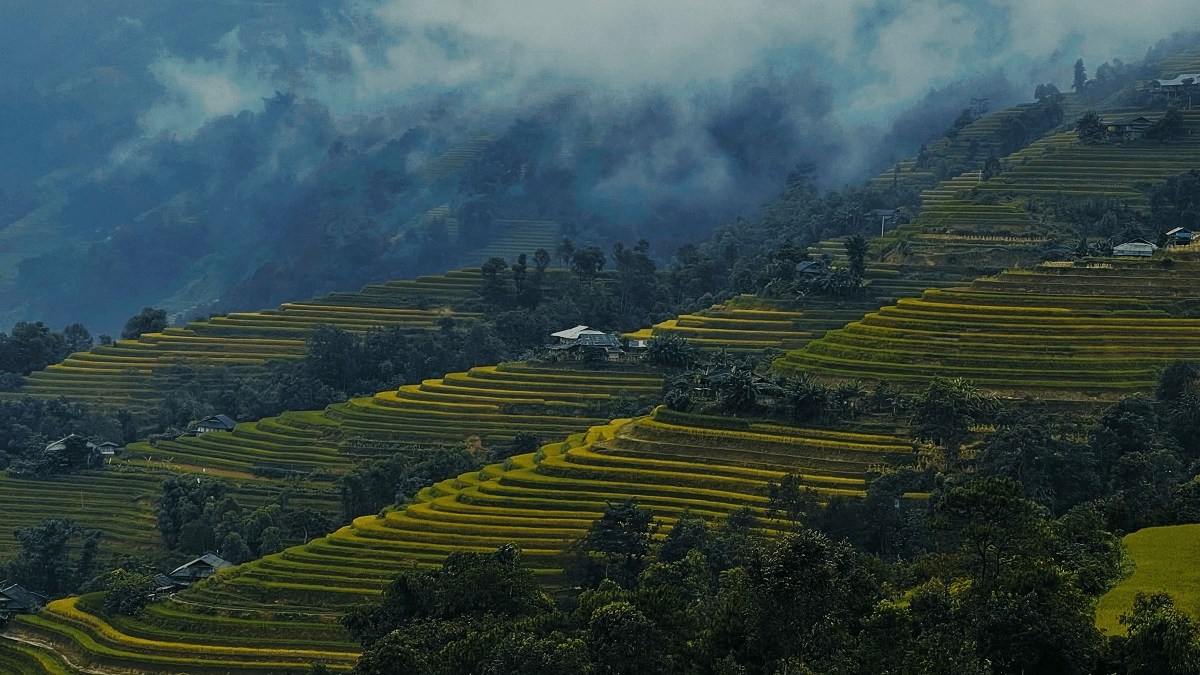
The Ultimate Ha Giang Loop Guide (2025): Itinerary, Map & Tips
2. Month-by-month weather breakdown (Jan – Dec)
Understanding Ha Giang’s monthly weather patterns is essential for planning a successful trip. Each month brings its own unique atmospheric conditions, from misty mountain mornings to dramatic summer thunderstorms. This detailed breakdown will guide you through the changing seasons, highlighting temperature ranges, rainfall expectations, and how these factors impact your travel experience.
2.1 January
January marks the heart of winter in Ha Giang, with average temperatures ranging from 10°C to 15°C in daytime and potentially dropping to 5°C or lower at night. The air remains crisp and dry, with minimal rainfall averaging just 25mm for the month. Morning fog frequently blankets the valleys until mid-morning, creating ethereal landscapes perfect for photography. Higher elevations like Dong Van and Meo Vac can experience occasional frost, particularly in early January, though snowfall remains extremely rare.
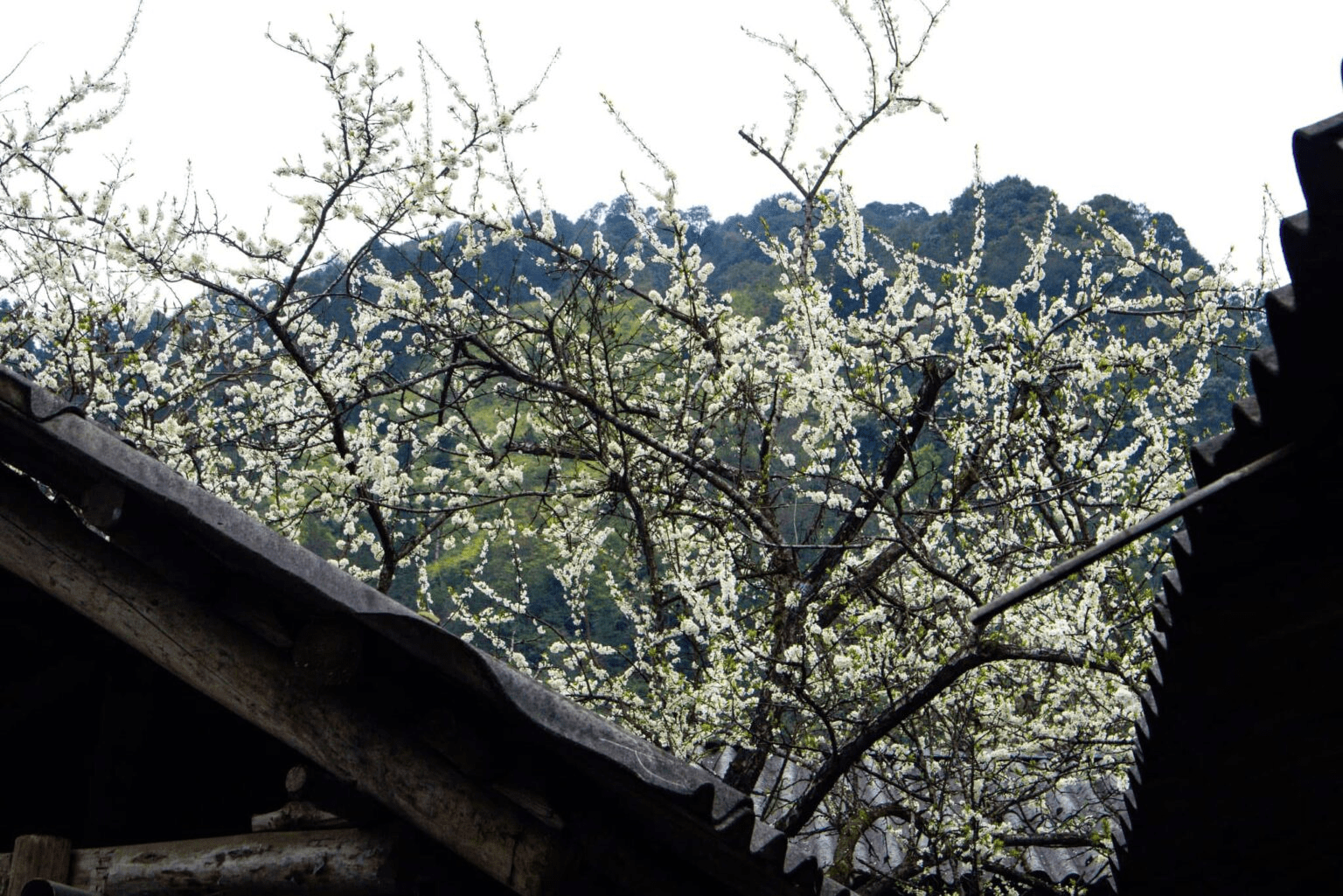
2.2 February
February continues the winter pattern with slightly moderating temperatures. Daytime averages climb to 12-18°C, while nights remain chilly at 7-10°C. Rainfall remains low (typically under 30mm), and humidity hovers around 75-80%. The province begins to see more sunny days, though mornings often start with light mist that burns off by mid-day. February’s clear skies make it excellent for long-distance views from mountain passes and lookout points like Ma Pi Leng. The month ends with hints of spring as early blossoms begin to appear in lower valleys.
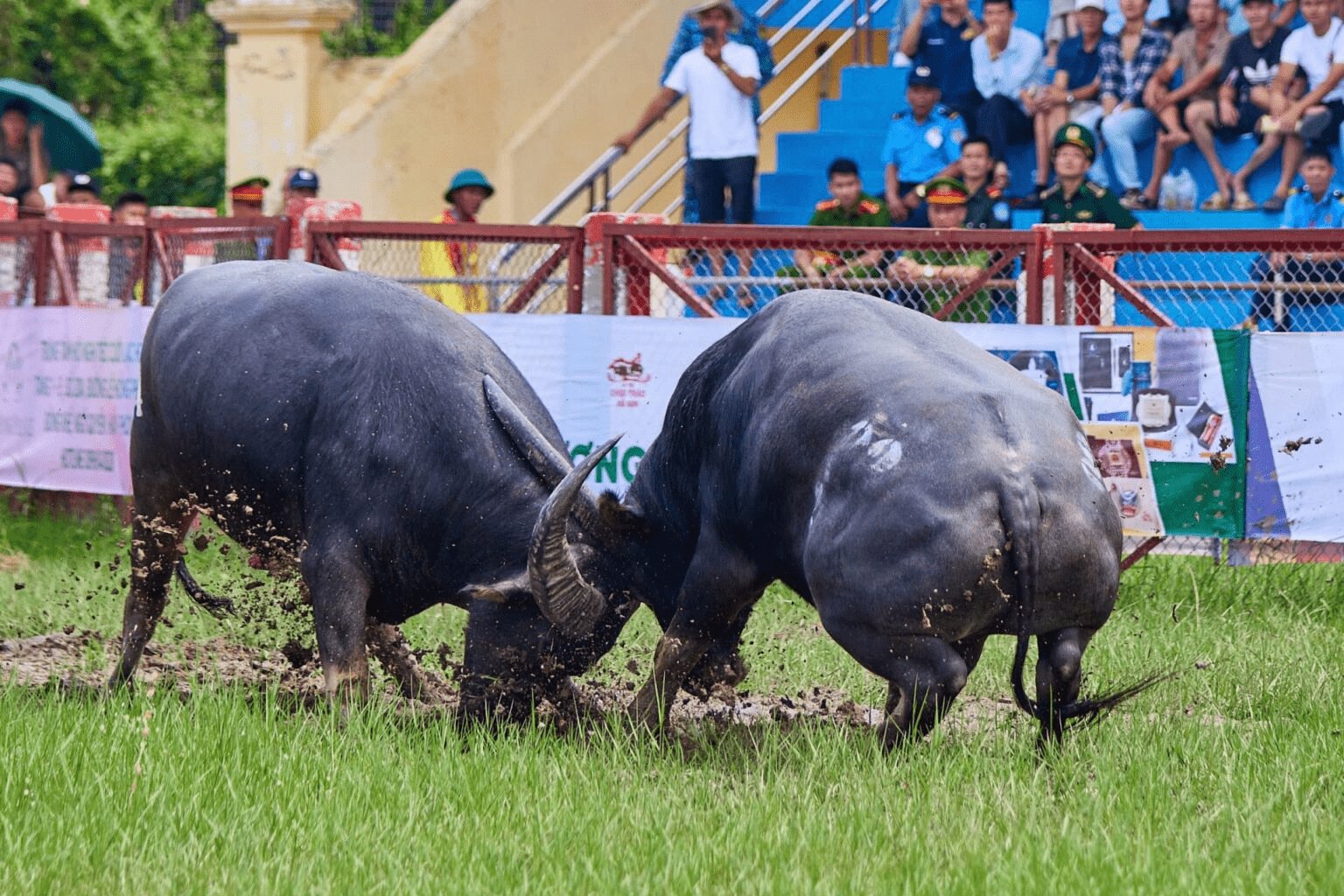
Ha Giang Loop in February: Complete Guide (Weather, Tips & Experience)
2.3 March
March signals the transition to spring, with temperatures warming noticeably to 15-22°C during the day and 10-15°C at night. Rainfall begins to increase slightly (40-50mm monthly average), bringing renewed vibrancy to the landscape. Spring flowers start blooming across the province, especially in the valleys around Quan Ba and Yen Minh. The peach and plum blossoms create splashes of pink and white against the limestone karsts. March brings variable conditions, with some days perfectly clear and others shrouded in spring mists that create mystical, photogenic landscapes.
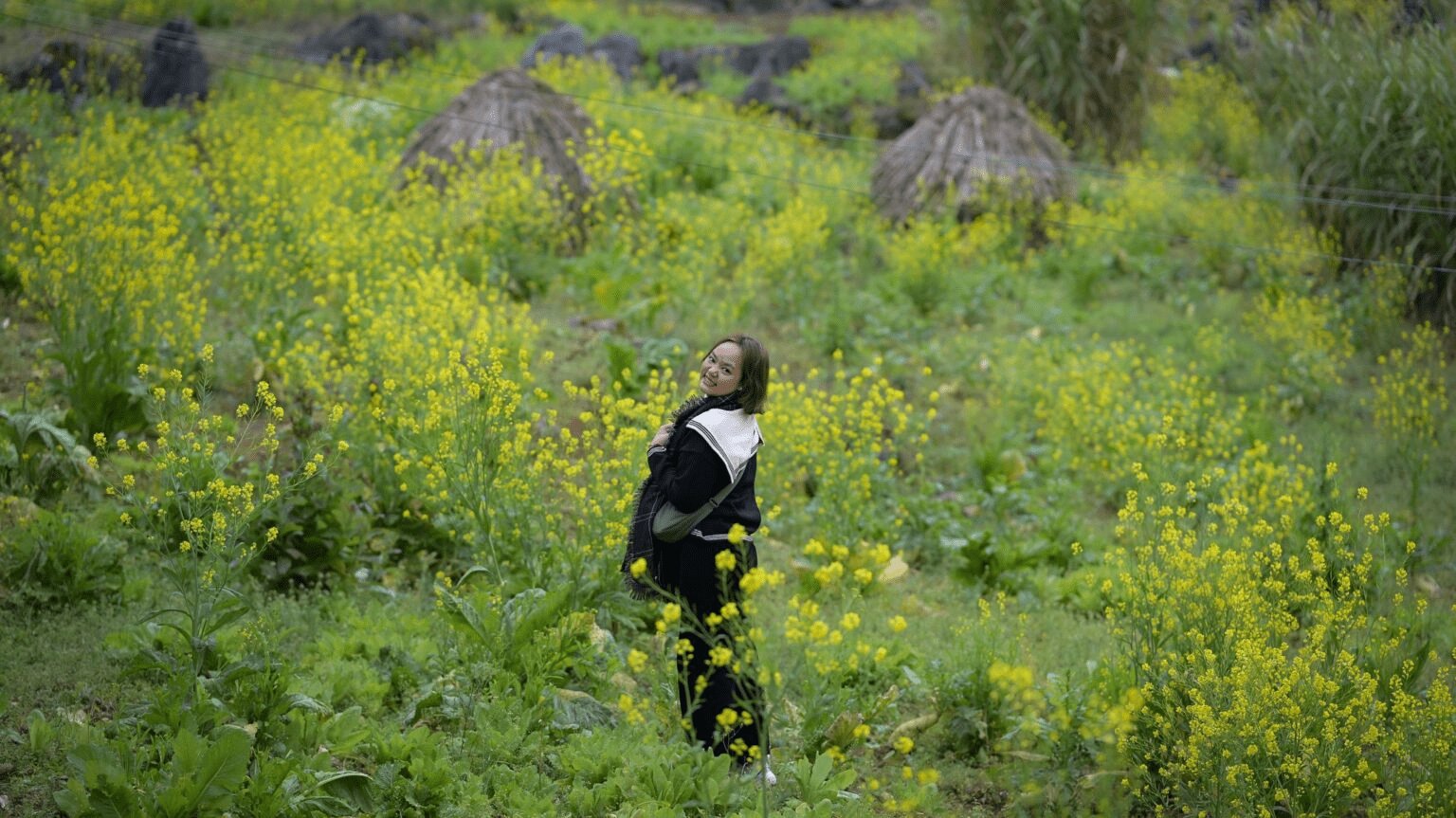
The Ultimate Guide to Ha Giang in March: Flowers, Weather & Tips
2.4 April
April firmly establishes spring in Ha Giang, with comfortable temperatures ranging from 18-25°C during daylight hours and 15-18°C overnight. Rainfall increases moderately (60-70mm), often coming as brief afternoon showers that clear quickly. The landscape transforms dramatically as rice planting begins in many areas, turning valleys into reflective mirrors of water. Visibility improves substantially from winter months, offering spectacular mountain vistas on clear days. April sees increasing tourist numbers as weather conditions become more reliably pleasant for outdoor activities.

2.5 May
May marks the approach of summer, with temperatures climbing to 22-28°C during the day and settling around 18-20°C at night. Rainfall increases significantly (100-150mm), often coming as afternoon thunderstorms that can be quite dramatic against the mountain backdrop. Humidity rises noticeably, averaging 80-85%. The landscape reaches peak greenery as young rice plants carpet the terraced fields and wild vegetation flourishes. May combines warm temperatures with vibrant scenery, making it popular despite the increasing chance of rain showers.

Visiting Ha Giang in May? Weather, Cloud Hunting & Top Itineraries
2.6 June
June introduces the summer rainy season, with temperatures reaching 25-30°C during daytime and 20-22°C at night. Rainfall increases substantially (150-200mm), with heavy downpours becoming more frequent and persistent. Mornings often start clear but give way to afternoon cloud buildup and evening storms. The intense summer rains can occasionally cause flash flooding and landslides in mountainous areas, making some remote roads challenging. Despite these challenges, June’s lush scenery and cascading waterfalls provide unique perspectives on Ha Giang’s landscape.
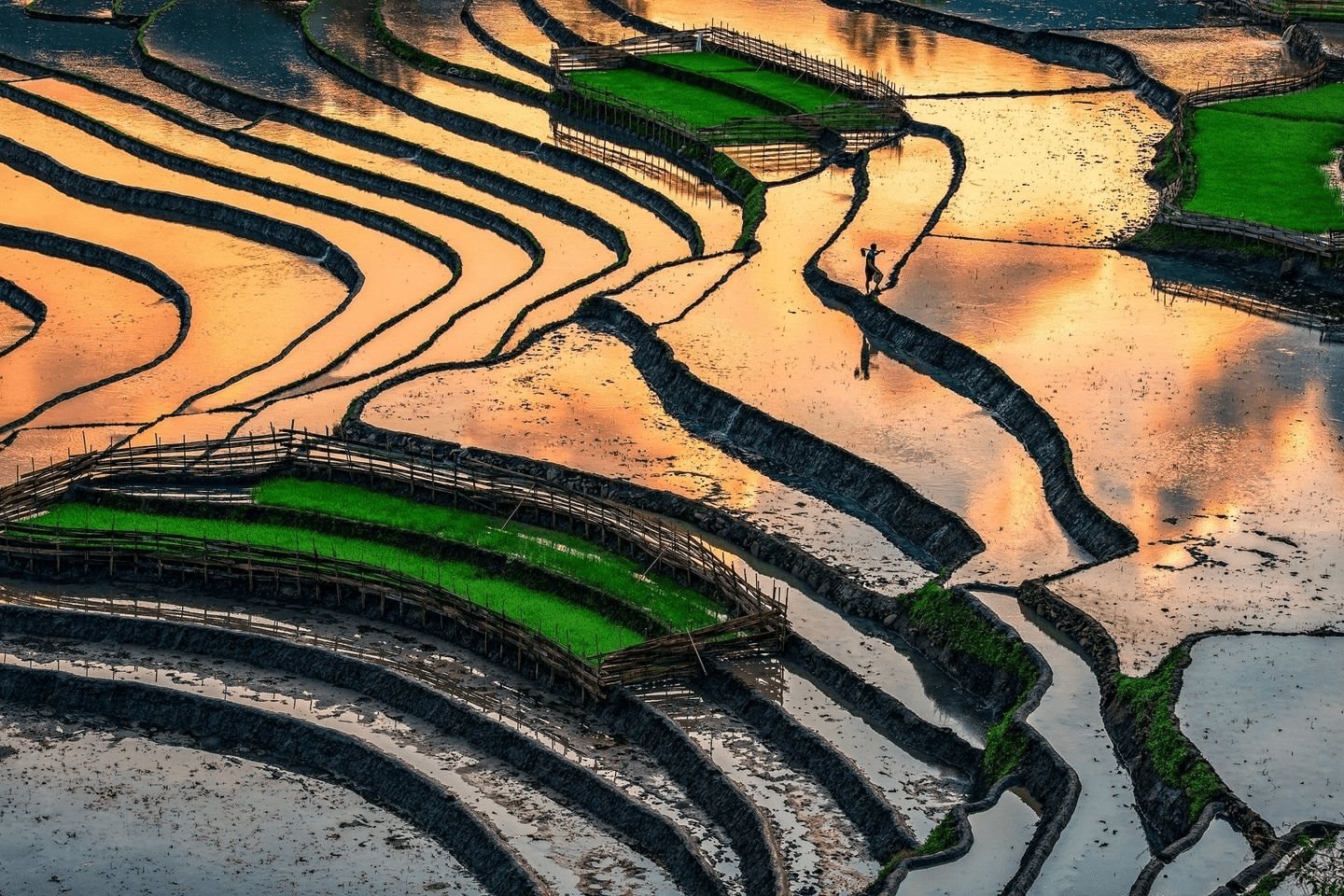
Visiting Ha Giang in June: Weather, Itinerary & Must-See Sights
2.7 July
July stands as Ha Giang’s wettest month, with rainfall averages soaring to 250-300mm. Temperatures remain consistently warm at 25-30°C during the day and 20-22°C overnight. Humidity reaches its annual peak, often exceeding 85%. Extended periods of rain can last several days, with brief sunny intervals. Rivers and streams run full, creating spectacular waterfall conditions throughout the province. The heavy rainfall can impact road conditions, particularly on minor routes and unpaved sections of the famous Ha Giang Loop. Travelers should prepare for delays and flexible itineraries during this peak wet period.

2.8 August
August continues the summer monsoon pattern with substantial rainfall (200-250mm) and warm temperatures ranging from 25-30°C during the day to 20-22°C at night. Humidity remains high, and afternoon thunderstorms occur frequently. By mid-to-late August, early rice harvests begin in some lower-elevation areas, creating golden patches amid the green landscape. River levels remain high, and some streams may still be difficult to cross after heavy downpours. Sunny mornings typically yield to cloudy afternoons, with the most reliable clear views coming in early morning hours.
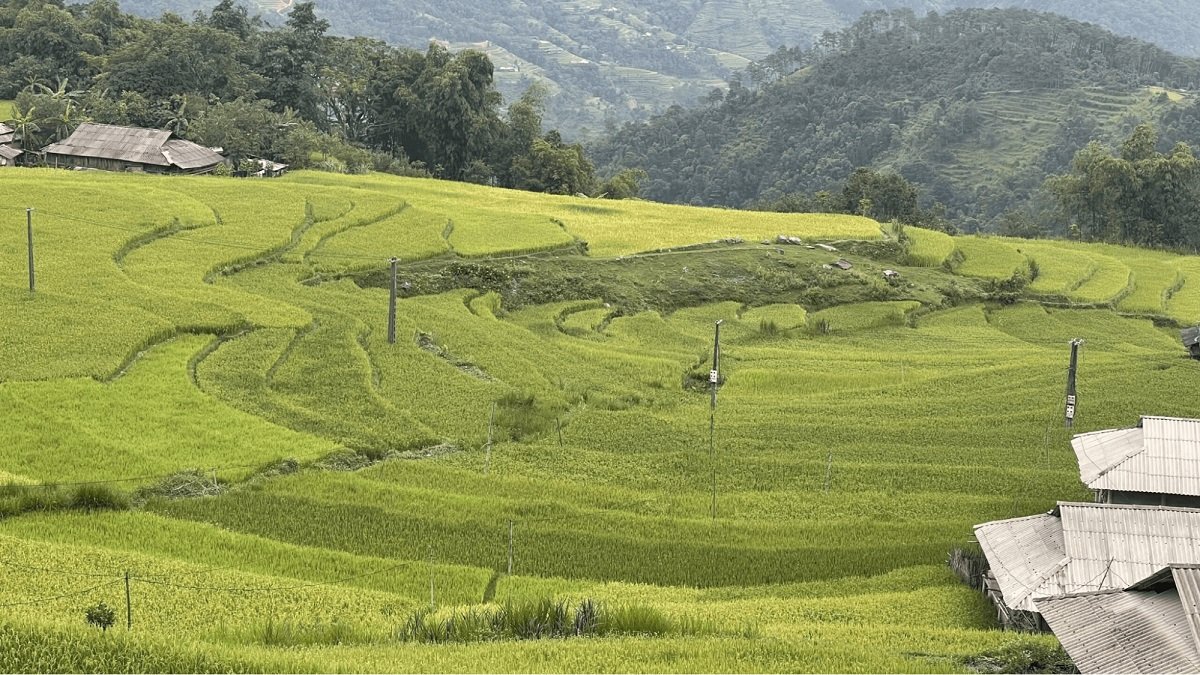
2.9 September
Ha Giang Loop in September marks a gradual transition away from peak monsoon conditions. Rainfall begins decreasing (150-180mm) though remains significant. Temperatures start moderating slightly to 22-28°C daytime and 18-20°C overnight. The month brings increasing periods of sunshine between rain events, with storms becoming less frequent and intense. September’s most distinctive feature is the beginning of the rice harvest season, with terraced fields turning golden in waves as different elevations mature at varying rates. This creates the famous “golden season” that progressively spreads across Ha Giang’s landscape.
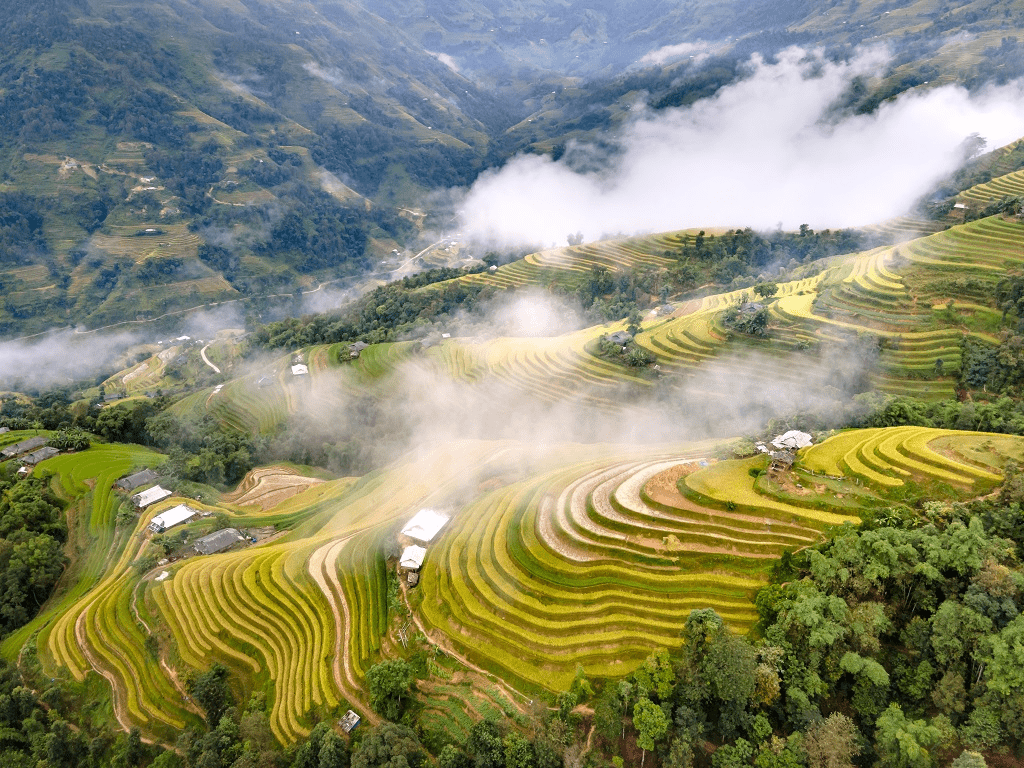
2.10 October
October heralds autumn’s arrival with significantly improved weather conditions. Rainfall decreases dramatically to 50-70mm, and temperatures settle into a comfortable range of 20-25°C during the day and 15-18°C at night. Humidity levels drop, and clear skies become the norm rather than the exception. This month brings Ha Giang’s most celebrated visual transformation as rice terraces reach peak golden coloration across most of the province. Additionally, wild buckwheat flowers begin blooming in pink and purple hues, particularly around the Dong Van Karst Plateau. October combines ideal weather with spectacular scenery, making it the single most popular month for tourism.

Ha Giang weather in October: climate, best time to visit & tips
2.11 November
November solidifies autumn conditions with increasingly cool, dry weather. Daytime temperatures range from 18-22°C, while nights become quite cool at 10-15°C. Rainfall decreases further to just 30-40mm for the month, and humidity drops to comfortable levels around 75%. The skies remain predominantly clear, with excellent visibility across mountain ranges. November’s special characteristic is the peak buckwheat flower bloom, painting entire hillsides in shades of pink and purple, particularly around Lung Cu and Dong Van. The month offers perfect trekking conditions combined with unique seasonal beauty.
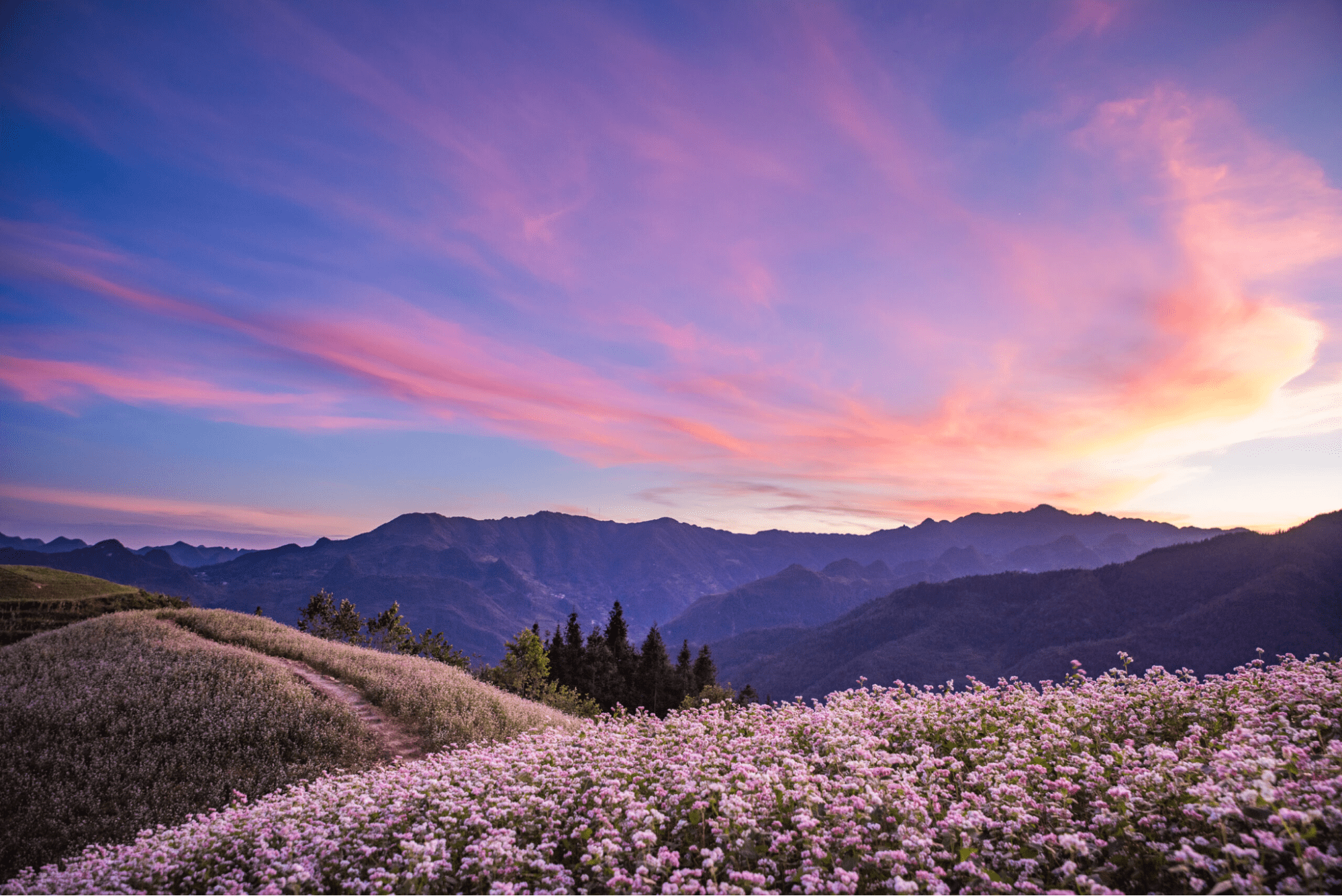
Ha Giang in November: A Guide to the Buckwheat Flower Fields
2.12 December
December marks winter’s return to Ha Giang, with temperatures dropping noticeably to 12-18°C during daylight hours and 7-12°C overnight. Higher elevations like Dong Van plateau can experience nighttime temperatures approaching freezing. Rainfall remains minimal at just 20-25mm monthly. Morning fog becomes increasingly common, particularly in river valleys and lower elevations. The winter light creates dramatic shadows across the karst landscape, especially during the golden hours around sunrise and sunset. December brings fewer tourists despite excellent road conditions, offering a more solitary experience of Ha Giang’s dramatic winter scenery.
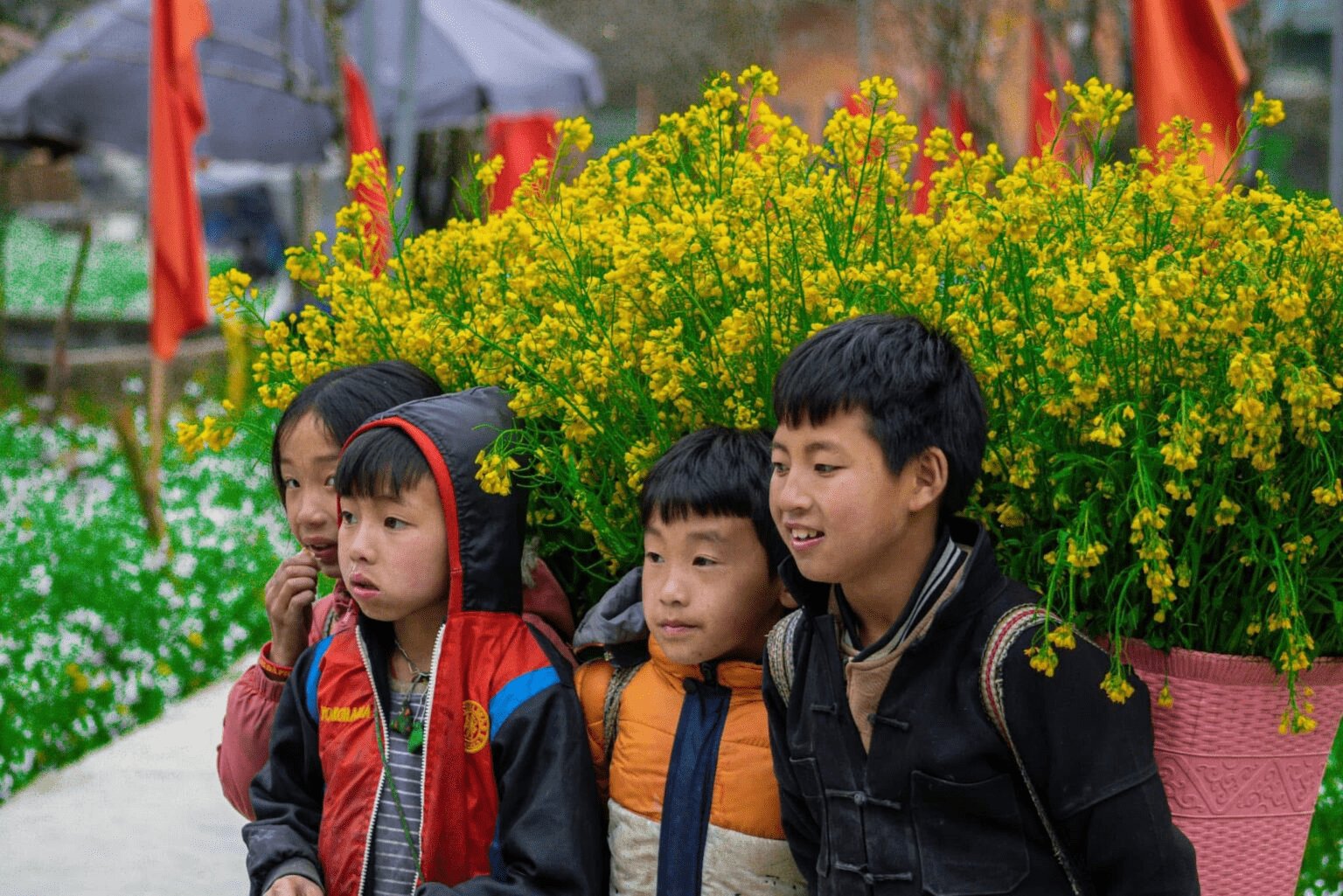
2.13 Temperature and rainfall chart
The climate of Ha Giang follows distinct seasonal patterns that directly impact travel conditions. This summary provides a quick reference for planning purposes:
- Winter (December – February): Dry, cool to cold conditions (7-18°C). Minimal rainfall (20-30mm monthly). Morning fog common. Good road conditions but cold temperatures.
- Spring (March – May): Warming temperatures (15-28°C). Gradually increasing rainfall (40-150mm monthly). Blooming season with lush greenery and flowers. Good balance of comfortable temperatures and manageable precipitation.
- Summer (June – August): Warm, wet conditions (20-30°C). Heavy rainfall (150-300mm monthly). Frequent storms and high humidity. Challenging road conditions in remote areas but intensely green landscapes.
- Autumn (September – November): Cooling temperatures (10-28°C). Decreasing rainfall (30-180mm monthly). Harvest season with golden rice terraces and buckwheat flowers. Optimal weather combined with peak scenic beauty.
2.14 When is the best time to visit?
The ideal time to visit Ha Giang depends entirely on your priorities and what experiences you seek. For most travelers, the autumn months of October and November represent the perfect combination of comfortable weather and spectacular scenery. Temperatures remain pleasant, rainfall is minimal, and the landscape transforms with golden rice terraces and blooming buckwheat flowers. This period offers the best overall conditions for motorcycle adventures, photography, and outdoor activities.
Spring (March to April) presents another excellent window with warming temperatures, moderate rainfall, and beautiful blossoms throughout the valleys. The landscape turns vibrantly green as rice planting begins, and visibility improves substantially from the winter months. Spring festivals among ethnic minority communities add cultural richness to your experience during this season.
Winter (December to February) attracts those seeking crisp mountain air and ethereal misty landscapes. While temperatures can drop quite low, especially at night, the clear, dry days offer exceptional long-distance views when morning fog lifts. Winter also presents the most authentic glimpse into local village life as fewer tourists venture to Ha Giang during these months.
Summer (June to August) remains the most challenging season due to heavy rainfall and potential road disruptions. However, for travelers willing to embrace some uncertainty, this period offers lush green landscapes, powerful waterfalls, and dramatically reduced tourist numbers. With proper preparation and flexible scheduling, summer can provide a uniquely immersive experience of Ha Giang’s natural power.
The Best Time to Visit Ha Giang: A Seasonal Guide to Flowers & Festivals
3. Season highlights: what to experience each month
Ha Giang’s changing seasons offer distinct experiences beyond mere weather conditions. Each period brings unique natural phenomena, agricultural activities, and cultural celebrations that transform the province throughout the year. From springtime blossoms to autumn harvests, understanding these seasonal highlights helps you align your visit with experiences that match your interests.
3.1 Spring (Mar – May): blossoms & festivals
Spring awakens Ha Giang with explosive natural beauty and cultural vibrancy. The season begins with peach and plum blossoms painting hillsides in delicate pink and white hues, particularly noticeable around Quan Ba and Yen Minh districts. By April, valleys turn emerald green as rice planting commences across terraced fields, creating stunning reflective surfaces that mirror the surrounding karst mountains. The spring atmosphere combines warming temperatures with refreshing mountain breezes, creating ideal conditions for extended outdoor exploration.
This season hosts numerous important cultural celebrations among Ha Giang’s ethnic communities. The Gau Tao Festival (typically in March) represents the most important annual celebration for the H’mong people, featuring colorful traditional dress, buffalo fights, and communal feasting. The Long Tong Festival, celebrated by the Tay community, marks the beginning of the agricultural season with rituals, games, and performances. Phieu Travel can arrange village homestays that coincide with these authentic celebrations, offering rare glimpses into traditions rarely seen by outside visitors.
Spring also provides ideal conditions for discovering Ha Giang’s remarkable biodiversity. Orchid enthusiasts should visit Dong Van Karst Plateau in April and May when wild orchid species bloom across the limestone landscape. Photographers find endless inspiration as morning mist interplays with emerging sunlight across the awakening landscape. The moderate temperatures and manageable rainfall make this season perfect for trekking to remote villages and exploring less-visited sections of the famous Ha Giang Loop.
3.2 Summer (Jun – Aug): rain & adventure
Summer transforms Ha Giang into a dramatic landscape of intense greenery, swollen rivers, and atmospheric mountain storms. The increased rainfall creates spectacular waterfall conditions throughout the province, with normally placid streams becoming powerful cascades. The Nho Que River, famous for its emerald hue, reaches peak water levels, making boat tours through the Tu San Canyon particularly impressive. The intense saturation of colors – from deep forest greens to vibrant wildflowers – creates a visual feast unlike any other season.
Despite challenging weather patterns, summer offers unique advantages for adventurous travelers. Tourist numbers drop significantly, allowing for more authentic interactions with local communities and unobstructed views of popular sites like Ma Pi Leng Pass (when clear). The rain typically follows predictable patterns, with mornings often remaining clear before afternoon downpours. Experienced guides from Phieu Travel can help you navigate these patterns, maximizing enjoyable exploration hours while ensuring safety during adverse conditions.
Summer brings distinctive cultural activities tied to the agricultural calendar. Many ethnic communities perform rain-calling rituals and blessing ceremonies for the growing crops during this period. Local markets buzz with activity as summer vegetables, fruits, and medicinal herbs become available. The province’s famous corn wine production ramps up during these months, and visitors can observe traditional distilling techniques in villages around Quan Ba and Yen Minh. The authentic daily rhythms of highland life become more visible as communities focus intensely on agricultural activities crucial to their subsistence.
3.3 Autumn (Sep – Nov): golden rice terraces
Autumn delivers Ha Giang’s most celebrated visual spectacle as terraced rice fields mature into rippling golden oceans across the mountainsides. This transformation begins in September at higher elevations like Hoang Su Phi and gradually spreads throughout the province, reaching peak beauty in October. The contrast between golden terraces, blue skies, and limestone karsts creates photographic opportunities that draw visitors from around the world. Morning mist often hugs the valleys before lifting to reveal the golden landscape bathed in soft autumn light.
October and November bring the famous buckwheat flower season, adding another dimension to the already spectacular scenery. These delicate pink and purple blossoms carpet entire hillsides, particularly around the Dong Van Karst Plateau, creating an otherworldly landscape that seems almost artificially enhanced. The flowering follows the rice harvest, ensuring that visitors during this period experience multiple visual highlights. The weather cooperates beautifully with clear skies, reduced humidity, and pleasant temperatures perfect for all-day exploration.
Autumn coincides with harvest festivals among many ethnic groups, including the Tay, Dao, and H’mong communities. These celebrations feature traditional music, dance performances, and feasting that visitors can sometimes join through proper local connections. Markets overflow with fresh harvest products, and rural kitchens busy themselves with preservation activities for the coming winter. Phieu Travel arranges special harvest-time homestays where guests can participate in traditional harvesting activities, learning ancient techniques passed through generations while helping local families with their crucial annual work.
3.4 Winter (Dec – Feb): trekking & village life
Winter brings a different character to Ha Giang, transforming the province into a landscape of subtle colors and ethereal mists. Morning fog frequently blankets valleys until mid-morning, creating mystical scenes as limestone peaks emerge like islands from a white sea. By midday, winter often delivers startlingly clear visibility, allowing for spectacular long-distance photography from vantage points like Ma Pi Leng Pass and Lung Cu Flag Tower. The stripped-back winter landscape reveals the true geological drama of Ha Giang’s karst formations without summer’s concealing foliage.
The cooler temperatures make winter ideal for trekking and motorcycle adventures for properly prepared visitors. Physical activities become more comfortable without summer’s heat and humidity, and the dry conditions ensure good traction on mountain paths and roads. December through February offers the best conditions for challenging treks to remote villages in Meo Vac and Dong Van districts. Wildlife spotting improves during winter as animals become more active during daylight hours, with various bird species and occasional glimpses of small mammals like muntjac deer and flying squirrels.
Winter provides the most authentic window into traditional village life as communities turn inward following the harvest season. Families gather around warm hearths in traditional stilt houses and rammed-earth dwellings, sharing stories and planning for spring planting. Visitors during this season witness textile production, bamboo craft making, and other traditional indoor activities that sustain communities through the winter months. The H’mong New Year (Tet H’mong), occurring in December, offers a rare opportunity to experience elaborate ceremonies, games, and courtship rituals that maintain cultural identities in these highland communities.
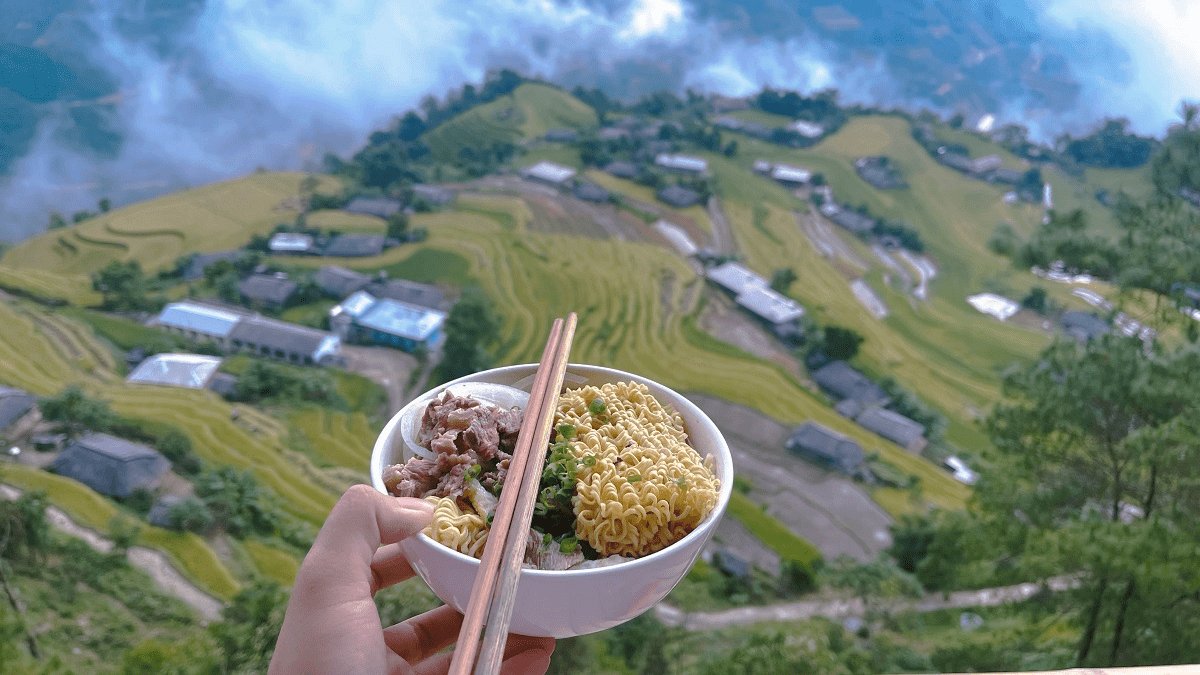
4. Safety, packing & travel tips by season
Navigating Ha Giang’s varied weather patterns requires thoughtful preparation tailored to each season. The province’s remote location and mountainous terrain demand respect and planning from travelers. These practical suggestions from Phieu Travel’s experienced guides will help ensure your journey remains comfortable, safe, and enjoyable regardless of when you visit.
4.1 What to pack
Winter (December – February)
- Thermal base layers and multiple clothing layers for temperature regulation
- A quality windproof and water-resistant jacket
- Warm hat, gloves, and scarf (especially for motorcycle travelers)
- Sturdy, waterproof hiking boots with good traction
- Moisturizer and lip balm for dry mountain air
- Portable charger/power bank (cold reduces battery life)
- Thermos for carrying hot drinks during day trips
Spring (March – May)
- Lightweight, quick-drying clothes with long sleeves for sun protection
- Light rain jacket or poncho for unexpected showers
- Hiking pants with zip-off legs to adjust for temperature changes
- Wide-brimmed hat and sunglasses
- Comfortable walking shoes with good grip
- Insect repellent (especially for May as humidity increases)
- Small day pack with rain cover
Summer (June – August)
- High-quality rain gear (jacket and pants preferred over ponchos)
- Quick-dry clothing (avoid cotton which stays wet)
- Waterproof bag covers or dry bags for electronics and documents
- Hiking sandals or water-resistant shoes
- Moisture-wicking underwear and socks
- Portable umbrella for sun and rain protection
- First aid kit including blister treatment and rehydration salts
Autumn (September – November)
- Layered clothing for temperature fluctuations
- Light jacket for cool mornings and evenings
- Comfortable walking shoes for harvest festival activities
- Camera with extra batteries and memory cards (peak photography season)
- Sunscreen and hat (the autumn sun remains strong at high altitudes)
- Light gloves and scarf for later autumn (November)
- Binoculars for distant landscape viewing
4.2 Road safety during wet months
Navigating Ha Giang’s famous loop during the rainy season requires additional precautions, especially for motorcycle travelers. Road conditions can deteriorate rapidly during heavy downpours, with increased risks of rockfalls and landslides in certain sections. The most vulnerable areas include portions of the Ma Pi Leng Pass, sections between Yen Minh and Dong Van, and smaller roads connecting to remote villages. Phieu Travel strongly recommends against self-driving motorbikes during heavy rain events if you lack experience with mountain roads.
When planning your itinerary during summer months, build in extra time between destinations to accommodate weather delays. The typical rainfall pattern brings afternoon downpours, making morning departures advisable for longer stretches. Always check local weather forecasts and consult with guesthouse owners or local authorities about current road conditions before departing. Some smaller roads may become temporarily impassable after heavy rain, requiring route adjustments or delays.
If caught in sudden rainfall while on the road, reduce speed significantly and increase following distance from other vehicles. Pull over in safe locations if visibility becomes severely limited, avoiding stopping under unstable hillsides or in low-lying areas prone to flash flooding. Wearing high-visibility clothing or reflective elements increases your visibility to other vehicles during rain or fog. Phieu Travel can arrange experienced local drivers familiar with seasonal road conditions for travelers who prefer not to self-drive during the rainy season.

5. FAQs: essential questions for Ha Giang travel
Travelers planning their Ha Giang adventure often share common questions about weather impacts on their journey. These frequently asked questions address key concerns to help you prepare effectively for your northern Vietnam experience regardless of when you choose to visit.
5.1 What’s the best month to visit Ha Giang for trekking and sightseeing?
October and November offer the ideal combination of comfortable temperatures, minimal rainfall, and spectacular scenery for both trekking and sightseeing. Daytime temperatures typically range from 18-25°C with clear skies and excellent visibility across mountain ranges. These months coincide with golden rice terraces and buckwheat flower blooms, creating Ha Giang’s most photogenic landscapes. The dry conditions ensure good traction on trekking paths and safe driving conditions on the famous Ha Giang Loop.
5.2 How cold does Ha Giang get in winter, and is there snow?
Winter temperatures in Ha Giang typically range from 7-18°C during the day, dropping to 5-10°C at night in most areas. Higher elevations like Dong Van Plateau can experience overnight temperatures approaching 0°C, particularly in January. While frost occasionally appears on mountain peaks above 1,500 meters, true snowfall remains extremely rare in Ha Giang. Instead, winter brings morning mist and fog that creates ethereal landscapes across the province. Travelers should pack warm layers but needn’t prepare for true snow conditions.
5.3 Which months are considered the rainy season in Ha Giang?
The primary rainy season extends from June through September, with July and August experiencing the heaviest precipitation. During peak rainy months, Ha Giang receives 200-300mm of rainfall, often coming as afternoon thunderstorms or multi-day rain events. The monsoon brings high humidity, temperatures around 25-30°C, and occasionally reduced visibility due to mist and cloud cover. Road conditions can deteriorate during this period, particularly on secondary routes and in areas prone to landslides.
5.4 Is it safe to travel Ha Giang during the peak rainy season (June – September)?
Traveling Ha Giang during the rainy season remains possible with proper preparation and realistic expectations. The main Ha Giang Loop road generally remains passable, though occasional delays due to minor landslides or flooding can occur. Safety concerns increase significantly during extended heavy rain events, which may necessitate schedule adjustments or route changes. Travelers during this period should maintain flexible itineraries, check weather forecasts daily, and consider hiring experienced local drivers rather than self-driving motorcycles. The reward for these precautions includes dramatically reduced tourist numbers and intensely green landscapes rarely seen by visitors.
5.5 Are there any local festivals or events scheduled around Ha Giang’s climate seasons?
Ha Giang’s cultural calendar follows seasonal patterns, with major celebrations aligned with agricultural cycles and traditional beliefs. Spring hosts numerous significant events, including the Gau Tao Festival (H’mong New Year) in January-February, depending on the lunar calendar. The Khau Vai Love Market occurs annually in March or April, drawing participants from across the region. Autumn brings harvest festivals in many villages, with community celebrations featuring traditional music, dance, and feasting. The Buckwheat Flower Festival in October showcases cultural performances against the backdrop of blooming hillsides. Phieu Travel can time your visit to coincide with these authentic cultural events.
5.6 What should I pack for Ha Giang during wet or cold months?
For wet summer months (June-September), prioritize quality rain gear, including waterproof jacket and pants, quick-dry clothing, and water-resistant footwear. Waterproof bags for electronics and important documents are essential. During cold months (December-February), pack thermal base layers, a windproof jacket, warm hat and gloves, and multiple clothing layers for temperature regulation. Regardless of season, bring a first aid kit, sunscreen, insect repellent, and portable charger. Motorcycle travelers should add additional protective gear appropriate to the season, including waterproof glove covers for rain and thermal glove liners for winter.
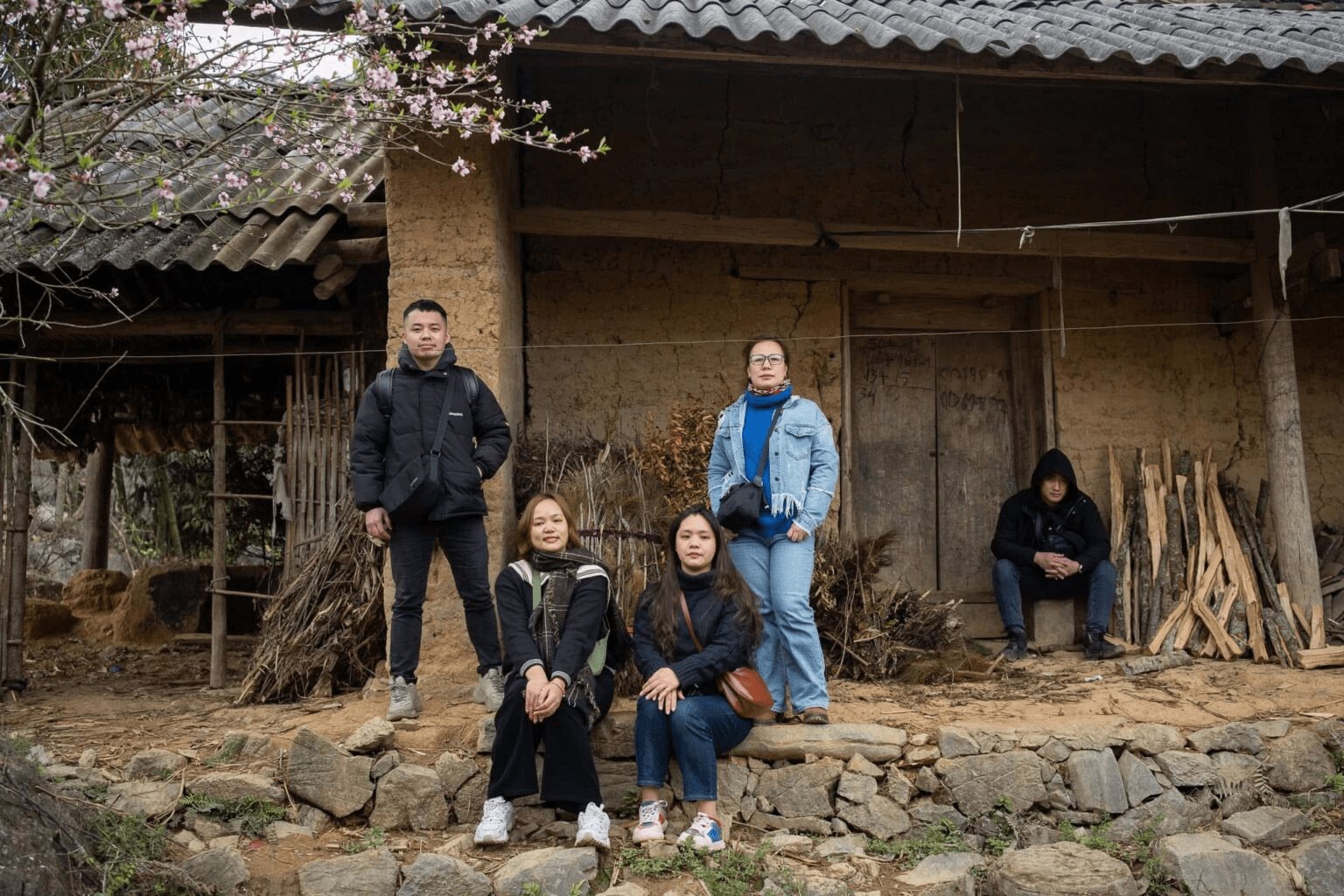
6. Current forecasts & weather resources
Staying informed about current and upcoming weather conditions can significantly enhance your Ha Giang experience. While long-range forecasts help with general planning, accessing real-time weather information becomes crucial as your travel dates approach. These reliable resources provide valuable data for both advance planning and day-to-day decision-making during your journey.
The Vietnam Meteorological and Hydrological Administration (VNMHA) provides the most accurate official forecasts for Ha Giang Province. Their website (kttv.gov.vn) offers 10-day forecasts with detailed temperature, rainfall, and wind predictions. For English-language resources, Accuweather and Weather Underground provide reliable forecasts for Ha Giang City, though their coverage of outlying districts like Dong Van and Meo Vac may be less precise. The Weather Underground app includes user weather stations that sometimes provide hyperlocal data from guesthouses and homestays in the region.
For travelers already in Vietnam, local television channels VTV1 and VTV3 broadcast national weather updates with northern highland forecasts included. Most hotels and homestays in Ha Giang City check these forecasts regularly and can provide translations and local context. Additionally, provincial radio (VOV) broadcasts weather alerts and road condition updates that locals monitor closely during adverse weather. While in remote areas, asking homestay hosts about weather expectations often provides surprisingly accurate insights based on generations of local knowledge.
Phieu Travel maintains direct connections with transportation providers and accommodations throughout Ha Giang, receiving regular updates on road conditions, particularly during the rainy season. Our guides monitor multiple weather sources and maintain communication with local authorities about potential weather-related disruptions. Before departure, we provide clients with tailored weather briefings specific to their itinerary dates and destinations, ensuring appropriate preparation for conditions likely to be encountered.
For motorcycle travelers, the combination of weather apps with real-time radar capabilities (like Rain Alarm or MyRadar) proves especially valuable for tracking approaching storm systems while on the road. Setting up these resources before departure ensures you’ll have crucial information available even in areas with limited connectivity. Remember that mountain weather can change rapidly, so checking conditions before setting out each morning remains essential regardless of seasonal patterns or general forecasts.
The magical landscapes of Ha Giang transform dramatically with each passing month, offering visitors entirely different experiences throughout the year. From misty winter mornings to golden autumn terraces, the region’s climate shapes both its natural beauty and cultural rhythms. By understanding Ha Giang weather by month patterns, you can align your journey with the experiences that speak most deeply to your travel aspirations.
Whether you seek the perfect photography conditions of autumn, the cultural festivities of spring, or the authentic village life of winter, Phieu Travel can craft an experience that maximizes your enjoyment while navigating seasonal considerations. Our deep local knowledge ensures you’ll experience the best of Ha Giang regardless of when you visit, with thoughtful adaptations for each season’s unique characteristics. For personalized advice about planning your Ha Giang adventure according to your preferred experiences and weather conditions, contact us at phieutravel.com.
Read more:
- Ha Giang Loop vs Sapa? The Ultimate Guide for Solo Adventurers in Northern Vietnam
- Ha Giang Loop 4 Days 3 Nights: The Ultimate Journey
- Lung Ho, Ha Giang complete guide to Vietnam’s Hidden Gem
- Top 20 Ha Giang homestays with scenic views (2025)
- Conquer Tay Con Linh Peak – Ha Giang’s Highest Mountain 2025

You Might Also Like
Ha Giang Weather in September: Complete Guide for Travelers
Exploring the magnificent Ha Giang Loop in September offers travelers a perfect balance of favorable[...]
Quan Ba Twin Mountains: Ha Giang’s Iconic Fairy Hills and Complete Travel Guide
The mystical Quan Ba Twin Mountains rise from the emerald valleys of Ha Giang like[...]
Vuong family mansion: the architectural marvel and cultural legacy of Ha Giang
Deep in Vietnam’s northern highlands, where mist-shrouded mountains meet terraced rice fields, stands a testament[...]
Ha Giang Loop Safety Tips: How to Ride Securely in Vietnam’s Northern Mountains
The Ha Giang Loop, with its winding mountain roads and breathtaking landscapes, offers one of[...]
The Ultimate Guide to the M-Shaped Curve on Ha Giang Loop
Vietnam’s remote northern province of Ha Giang hides a natural wonder that has captivated adventurous[...]
Most Beautiful Places to Visit in Vietnam: Essential Destinations and Insider Tips
Vietnam captivates travelers with its stunning landscapes, rich cultural heritage, and warm hospitality. From mist-shrouded[...]
Beyond the Beaten Path: Discovering Ha Giang Province in Northeast Vietnam
Ha Giang Province in Northeast Vietnam stands as one of the country’s last frontiers for[...]
Rainy season in Ha Giang: what to expect, when to go, and travel tips
Vietnam’s northern frontier reveals a different face during the rainy season, transforming Ha Giang’s limestone[...]